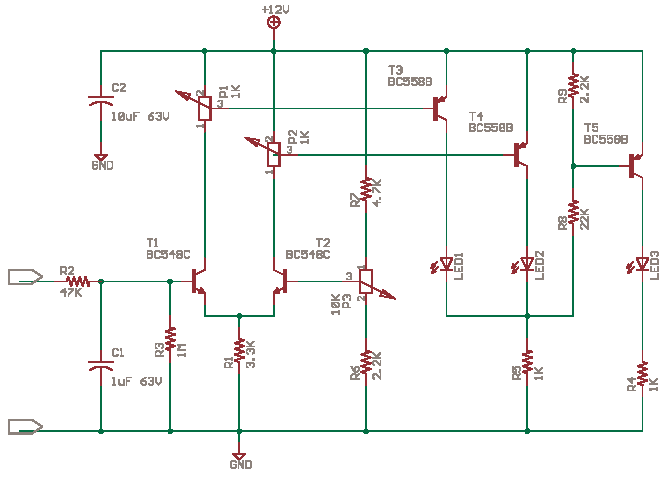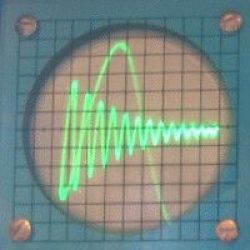LED Voltage Level Indicator

This circuit is derived from a Siemens Application Note 1974. This circuit uses common components of today.
The circuit is here as it is of high educational value. I have not tested it. You can ‘simulate and test’ or ‘wire it up and try’ and let me know how it worked. The Circuit is also a simple analog to digital converter. You can use optos in place of LEDs.
T1 and T2 make a differential amplifier. T3, T4 and T5 driving the LEDs are comparators. When input voltage is increased T1 is turned on which leads to more base current for T3 which Lights LED1. When input voltage is less T2 turns on as it gets a better base current from P3 which turns on LED2 via T4. When both LEDs are off T5 gets biased as no drop across R5 which lights the LED3 thru T5 hopefully.

What you need to know is a small current Ib thru the base-emitter path in the direction of the emitter arrow will lead to a large Current Ic thru the emitter-collector path in direction of arrow. Ic = B * Ib where B – beta is the DC current gain, it could be 100-400
Fluid or Water Level with Reed Relays
Beta is different in each transistor you buy and varies with the test conditions and even with temperature and age. The LED1 and LED2 will indicate above or below Limits set by P2 and P1. The Limit Threshold itself is set at P3 i think. LED3 will light when Hi LED and Lo LED both are off.
The applications of this circuit are FM tuning indicator, Stereo Balance Indicator (Wire T2 like T1 then we get two channel inputs) and battery level indicator.








